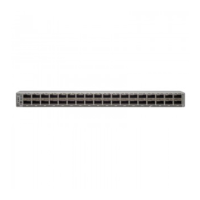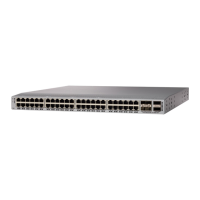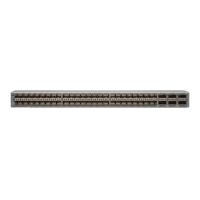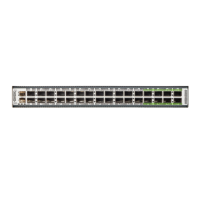Before you begin
If you want to distribute the user role configuration, enable user role configuration distribution on all Cisco
NX-OS devices to which you want the configuration distributed.
SUMMARY STEPS
1. configure terminal
2. role name role-name
3. rule number {deny | permit} command command-string
4. rule number {deny | permit} {read | read-write}
5. rule number {deny | permit} {read | read-write} feature feature-name
6. rule number {deny | permit} {read | read-write} feature-group group-name
7. rule number {deny | permit} {read | read-write} oid snmp_oid_name
8. (Optional) description text
9. exit
10. (Optional) show role
11. (Optional) show role {pending | pending-diff}
12. (Optional) role commit
13. (Optional) copy running-config startup-config
DETAILED STEPS
PurposeCommand or Action
Enters global configuration mode.configure terminal
Example:
Step 1
switch# configure terminal
switch(config)#
Specifies a user role and enters role configuration mode.
The role-name argument is a case-sensitive, alphanumeric
character string with a maximum length of 16 characters.
role name role-name
Example:
switch(config)# role name UserA
switch(config-role)#
Step 2
Configures a command rule.
rule number {deny | permit} command command-string
Step 3
Example:
The command-string argument can contain spaces and
regular expressions. For example, interface ethernet
includes all Ethernet interfaces.
switch(config-role)# rule 1 deny command clear
users
Repeat this command for as many rules as needed.
Configures a read-only or read-and-write rule for all
operations.
rule number {deny | permit} {read | read-write}
Example:
Step 4
switch(config-role)# rule 2 deny read-write
Configures a read-only or read-and-write rule for a feature.
rule number {deny | permit} {read | read-write} feature
feature-name
Step 5
Use the show role feature command to display a list of
features.
Example:
Cisco Nexus 9000 Series NX-OS Security Configuration Guide, Release 9.x
163
Configuring User Accounts and RBAC
Creating User Roles and Rules
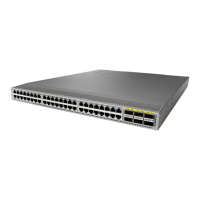
